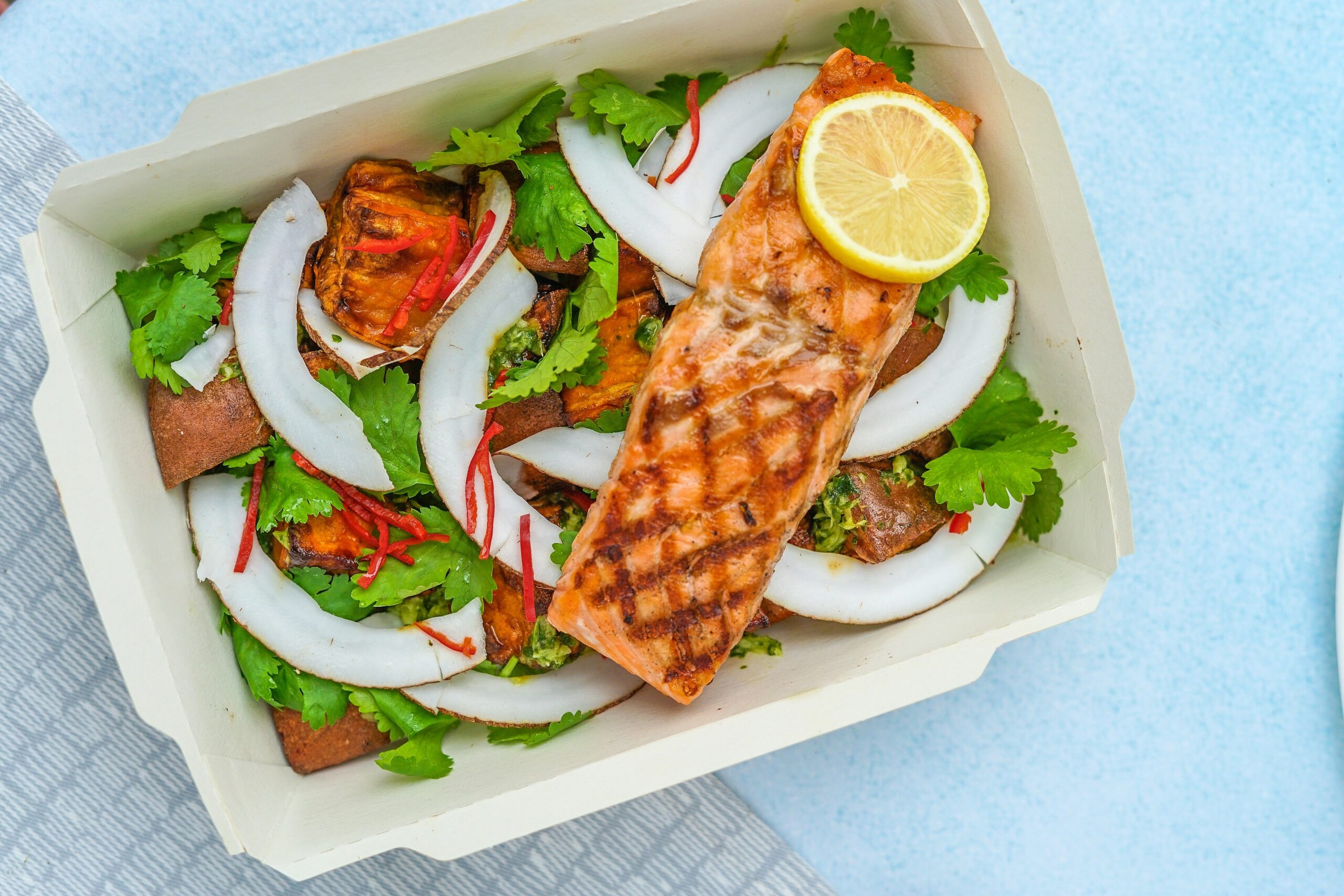Imagine finally being able to curb those relentless sugar cravings and enjoy your favorite treats guilt-free. Well, the keto diet might just be the answer you’ve been looking for. With its low-carb, high-fat approach, this diet has gained popularity in recent years for its potential to not only aid in weight loss but also reduce cravings for sweets. By depriving your body of its primary source of fuel – carbohydrates – and replacing it with fat, the keto diet aims to transform your metabolism into a fat-burning machine. In this article, we will explore the science behind how the keto diet may help you conquer your sweet tooth and finally break free from those sugar-laden temptations.
Understanding the Keto Diet
What is the Keto Diet
The keto diet, short for the ketogenic diet, is a low-carb, high-fat diet that has gained popularity in recent years for its potential health benefits. The main goal of the keto diet is to put your body in a state of ketosis, where it primarily burns fat for fuel instead of carbohydrates. By drastically reducing your carbohydrate intake and increasing your consumption of healthy fats, the keto diet aims to shift your metabolism and promote weight loss, improved brain function, and balanced blood sugar levels.
How the Keto Diet Works
When you follow the keto diet, you limit your carbohydrate intake to approximately 20-50 grams per day. This forces your body to break down fat stores and produce ketones, which are molecules that can cross the blood-brain barrier and provide energy for your brain. By relying on fat as its main fuel source, your body enters a metabolic state known as ketosis. Ketosis not only promotes fat burning but also helps stabilize blood sugar levels, reduce inflammation, and increase satiety.
Benefits and Downsides of the Keto Diet
The keto diet offers a range of potential benefits, including weight loss, improved mental clarity, increased energy levels, and reduced cravings for sweets. By reducing carbohydrate intake, the keto diet can help stabilize blood sugar levels and prevent spikes and crashes in energy. It may also lead to a decrease in appetite and a greater feeling of fullness, making it easier to maintain a calorie deficit and lose weight. However, it’s important to consider the downsides of the keto diet as well. The initial transition period, often referred to as the “keto flu,” can cause symptoms such as fatigue, headaches, and irritability. Additionally, the strict dietary restrictions and high-fat nature of the diet may not be suitable for everyone, and long-term adherence can be challenging.
Cravings For Sweets
What Triggers Sweet Cravings
Cravings for sweets can be triggered by various factors, including psychological, hormonal, and environmental influences. Stress, emotional eating, and social cues are common psychological triggers that can lead to cravings for sweets. Hormonal changes, such as shifts in estrogen and serotonin levels, can also play a role in sweet cravings, particularly during certain phases of the menstrual cycle. Moreover, the abundance of sugary foods in our environment, along with conditioned responses developed over time, can create a habit of craving sweets.
Health Risks of Excessive Sugar Intake
Excessive sugar intake can have detrimental effects on your health. Regularly consuming high amounts of sugar has been linked to an increased risk of obesity, type 2 diabetes, heart disease, and various other chronic conditions. Sugar provides empty calories, meaning it contributes to weight gain without providing any significant nutritional value. Moreover, sugar can cause blood sugar spikes and crashes, leading to energy fluctuations, mood swings, and increased hunger. By reducing your sugar consumption, you can mitigate these health risks and improve your overall well-being.
Role of Blood Sugar Levels in Cravings
Blood sugar levels play a significant role in cravings for sweets. When you consume high-carbohydrate foods, such as sugary treats or refined grains, your blood sugar rapidly rises. This surge triggers the release of insulin, a hormone responsible for transporting glucose from the bloodstream into cells for energy. However, this spike in insulin also results in a rapid drop in blood sugar, leading to cravings for more sugar to replenish the energy deficit. By following a low-carb ketogenic diet, you can stabilize blood sugar levels and reduce the frequency and intensity of sweet cravings.

Blood Sugar and the Keto Diet
How Keto Diet Affects Blood Sugar Levels
The keto diet can have a profound impact on blood sugar levels. By drastically reducing carbohydrate intake, the keto diet minimizes blood sugar spikes and helps maintain stable blood sugar levels throughout the day. Instead of relying on glucose from carbs for energy, your body shifts to using ketones derived from fat breakdown. As a result, your blood sugar levels remain steady, reducing the chances of experiencing cravings for sweets and other sugary foods. This stabilization of blood sugar is one of the key reasons why the keto diet can be effective in reducing cravings and promoting overall health.
Keto Diet and Insulin Resistance
Insulin resistance is a condition in which cells become less responsive to the effects of insulin, leading to elevated blood sugar and insulin levels. The keto diet has been shown to improve insulin sensitivity, reducing the risk of insulin resistance and type 2 diabetes. By reducing carbohydrate intake, the need for insulin secretion decreases, and the body becomes more efficient at using insulin to transport glucose into cells. This improvement in insulin sensitivity can help regulate blood sugar levels, decrease sugar cravings, and contribute to long-term metabolic health.
The Keto Diet and Appetite Regulation
Role of Ketosis in Suppressing Appetite
One of the remarkable benefits of the keto diet is its ability to suppress appetite. When you’re in a state of ketosis, your body has a steady supply of energy from the breakdown of fats. This leads to increased production of ketones, which have been found to reduce hunger and increase feelings of fullness. Additionally, ketones can impact the release of hunger hormones, such as ghrelin and leptin, further influencing appetite regulation. By experiencing reduced hunger and increased satiety, you’re less likely to succumb to cravings for sweets and other unhealthy foods.
The Impact of High-Fat Foods on Satiety
High-fat foods, which are a staple of the keto diet, have been shown to enhance feelings of satiety and fullness. Fat takes longer to digest than carbohydrates and protein, which can help keep you satisfied for longer periods. Furthermore, fats are calorie-dense and provide a greater sense of mouthfeel and satisfaction, making your meals more enjoyable. By incorporating healthy fats, such as avocados, nuts, and olive oil, into your meals, you can maintain better control over your appetite and reduce the cravings for sweets that often accompany hunger pangs.

Sugar Addiction and the Keto Diet
Sugar as an Addictive Substance
Sugar has been likened to an addictive substance due to its effect on the brain’s reward system. Consumption of sugar elicits the release of dopamine, a neurotransmitter associated with pleasure and reward. Over time, repeated exposure to sugar can lead to tolerance, requiring higher quantities of sugar to achieve the same pleasurable effect. This tolerance can develop into sugar addiction, characterized by cravings, withdrawal symptoms, and the inability to control sugar consumption. Fortunately, the keto diet can break this addictive cycle and help reduce sugar cravings.
How Keto Diet Can Break the Sugar Addiction
The keto diet can break the sugar addiction by minimizing sugar intake, stabilizing blood sugar levels, and retraining your taste buds. By eliminating or drastically reducing sugar and refined carbohydrates from your diet, you remove the stimulus that perpetuates the addiction cycle. Additionally, the keto diet’s focus on healthy fats and moderate protein provides satiety, reducing the desire for sugary snacks. As your body adapts to using ketones for energy, your taste preferences may shift, and you may find that naturally sweet foods like berries become more satisfying and enjoyable.
Easing Into the Keto Diet
Gradual Vs. Immediate Transition into the Keto Diet
When it comes to transitioning into the keto diet, both gradual and immediate approaches can be effective, depending on your preferences and goals. Gradual transition involves gradually reducing carbohydrate intake over a few weeks, allowing your body to adapt slowly. This approach may be more manageable for individuals who are accustomed to a higher carbohydrate diet and those who experience intense sugar cravings. On the other hand, an immediate transition involves a swift change to a very low-carb ketogenic diet. This approach can lead to a faster adaptation to burning fat for fuel but may cause more pronounced withdrawal symptoms initially.
How to Minimize Sugar Withdrawal Symptoms
During the initial transition into the keto diet, it’s common to experience withdrawal symptoms as your body adjusts to using fat rather than glucose for energy. These symptoms, which can include fatigue, irritability, and cravings, are often referred to as “keto flu.” To minimize sugar withdrawal symptoms, it’s important to stay hydrated, increase your electrolyte intake, and consume adequate amounts of healthy fats. Additionally, gradually reducing your carbohydrate intake rather than cutting it off abruptly can help ease the transition and minimize the intensity of withdrawal symptoms.

Alternatives to Sweets in the Keto Diet
Keto-Friendly Dessert Options
Although the keto diet restricts traditional sweets and desserts, there are numerous keto-friendly dessert options that can satisfy your sweet tooth without derailing your progress. These desserts often rely on low-carb sweeteners, such as stevia, erythritol, or monk fruit, to provide a sweet taste without spiking blood sugar levels. Some popular keto dessert options include chocolate avocado mousse, keto cheesecake, coconut flour cookies, and almond butter fat bombs. By incorporating these delicious treats into your keto lifestyle, you can indulge in sweetness while staying true to your dietary goals.
Natural Sweeteners Allowed in Keto
While sugar is off-limits on the keto diet, there are several natural sweeteners that are allowed and can be used as alternatives in moderation. Stevia, a zero-calorie sweetener derived from the Stevia rebaudiana plant, is a popular choice for those following the keto diet. Erythritol, a sugar alcohol with minimal impact on blood sugar levels, is another commonly used sweetener. Monk fruit extract, derived from the monk fruit, is also a suitable option due to its lack of carbohydrates and calories. These natural sweeteners can add sweetness to your keto-friendly recipes without interfering with ketosis or spiking blood sugar.
Maintaining the Keto Lifestyle
Challenges of Being on a Keto Diet
Maintaining a keto lifestyle can present challenges, particularly in a world saturated with high-carbohydrate and sugary foods. One of the significant challenges is social pressure and the difficulty of adhering to the keto diet in social gatherings or eating out. It can also be challenging to find keto-friendly options when traveling or dining at restaurants that do not cater to specific dietary needs. Additionally, the need for careful meal planning, label reading, and tracking macronutrients can be time-consuming and require a certain level of dedication. However, with proper preparation and the right mindset, these challenges can be overcome, and the keto lifestyle can become a sustainable choice.
Tips for Long-Term Success on the Keto Diet
To achieve long-term success on the keto diet, it’s important to establish healthy habits and adopt a sustainable approach. Here are some tips to help you stay on track:
-
Educate Yourself: Understand the principles behind the keto diet and the science behind its effects on your body. This knowledge can help reinforce your commitment and keep you motivated.
-
Plan Ahead: Plan your meals and snacks in advance to ensure you have keto-friendly options readily available. Batch cooking and meal prepping can save time and make sticking to the diet easier.
-
Stay Hydrated: Adequate hydration is crucial on the keto diet. Drinking plenty of water can help alleviate cravings, promote detoxification, and support overall health.
-
Find Support: Surround yourself with a supportive community of individuals who share your goals. Online forums, social media groups, or in-person support groups can provide accountability, encouragement, and valuable tips.
-
Listen to Your Body: Pay attention to how you feel on the keto diet. Adjust your macronutrient ratios, caloric intake, or meal timing if needed. Every individual is unique, and it’s important to find what works best for you.
-
Practice Mindful Eating: Be mindful of your eating habits and focus on enjoying your meals. Slow down, savor each bite, and listen to your body’s hunger and fullness cues.
-
Incorporate Regular Physical Activity: Engage in regular exercise to support weight management, improve overall health, and enhance the benefits of the keto diet. Consult with a healthcare professional before starting any new exercise program.
By incorporating these tips into your lifestyle, you can increase your chances of long-term success on the keto diet and maintain a healthy relationship with food.
Studies and Research on Keto and Cravings
What the Science Says about Keto and Sugar Cravings
Scientific research has explored the relationship between the keto diet and sugar cravings, highlighting its potential to reduce the desire for sweet foods. Several studies have demonstrated that low-carbohydrate diets, such as the keto diet, can lead to a significant reduction in cravings and consumption of high-sugar foods. The ketogenic diet’s impact on blood sugar regulation, insulin resistance, and appetite regulation plays a vital role in these findings. While more research is still needed, the available evidence suggests that the keto diet can be an effective strategy for curbing sugar cravings and promoting healthier dietary choices.
Evidence supporting Keto Diet’s role in Reducing Sweet Cravings
Numerous studies have provided evidence supporting the keto diet’s role in reducing sweet cravings. One study published in the American Journal of Clinical Nutrition found that participants on a low-carbohydrate ketogenic diet experienced a decrease in hunger and cravings for carbohydrates compared to those on a low-fat diet. Another study published in the journal Nutrients reported that individuals following a very low-carbohydrate ketogenic diet exhibited reduced reward-related brain activity for food compared to those on a higher-carbohydrate diet. These findings suggest that the keto diet can be effective in reducing sweet cravings by altering hunger hormones and affecting brain responses to food cues.
Personal Experiences with Keto and Sugar Cravings
Personal Stories about Transitions from Sugar-filled to Sugar-free Diet
Countless individuals have shared their personal experiences of transitioning from a sugar-filled diet to a sugar-free one while following the keto lifestyle. Many have reported a significant reduction in sugar cravings and an improved relationship with food. Individuals have shared stories of breaking free from their addiction to sugary snacks, feeling more satisfied with nutrient-dense meals, and experiencing stable energy levels throughout the day. Personal accounts highlight the empowering nature of the keto diet, showing how it can help regain control over cravings and establish healthier eating habits.
Effectiveness and Challenges Experienced during Transition
While the effectiveness of the keto diet in reducing sugar cravings is well-documented, personal experiences also reveal the challenges one might face during the transition period. Some individuals have reported initial difficulty adapting to the low-carbohydrate lifestyle, experiencing withdrawal symptoms and intense sugar cravings. However, as they persevered and allowed their bodies to adjust, most individuals noted a significant reduction in sugar cravings over time. Patience, determination, and support from others on a similar journey were key factors in overcoming these challenges and successfully transitioning to a healthier, sugar-free lifestyle.
In conclusion, the keto diet holds promise in reducing cravings for sweets and promoting a healthier relationship with food. By stabilizing blood sugar levels, enhancing appetite regulation, and breaking the addictive nature of sugar, the keto diet empowers individuals to make mindful and nutritious dietary choices. However, it’s crucial to remember that everyone’s experience with the keto diet may vary, and it’s always recommended to consult with a healthcare professional before making any significant dietary changes. With dedication, support, and a balanced approach, the keto lifestyle can help you achieve your health and wellness goals while enjoying a life free from sugar cravings.

